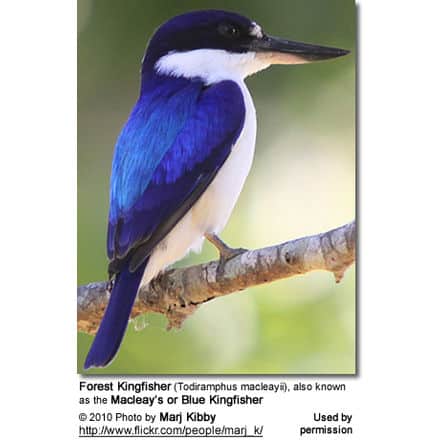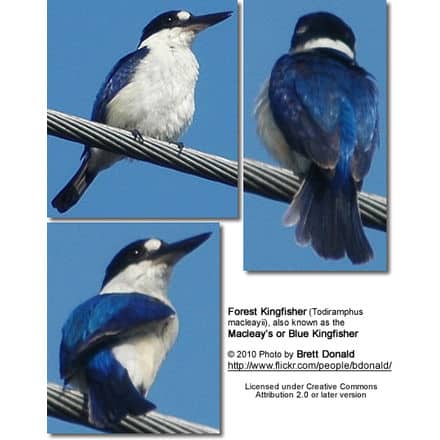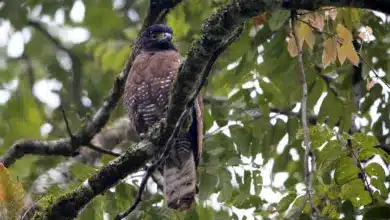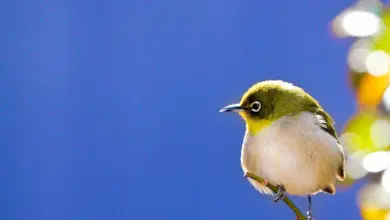Forest Kingfisher or Macleay’s or Blue Kingfisher
The Forest Kingfisher (Todiramphus macleayii) – also known as the Macleay’s or Blue Kingfisher – is found in Indonesia, New Guinea and coastal eastern and northern Australia.
These predominantly blue and white birds hunt invertebrates, small frogs, and lizards.
Distribution and Subspecies
The Forest Kingfishers inhabit the coastal forests bordering the rivers and mangroves of Indonesia, New Guinea and coastal Eastern and Northern Australia. They can also be found in Papua New Guinea and the Solomon Islands.
In Australia, they occur on or near the Australian Coastline from Port Stephens in New South Wales, northwards to Cape York, and westwards across the Top End.
During the summer, they can be found in the southern parts of their range – in New South Wales and southern Queensland.
Those occurring in other countries are permanent residents.
As suggested by their names, they inhabit, subtropical or tropical dry forests, moist lowland forests, mangrove forests, and Melaleuca swampland (= an Australian wetland tree).
Two subspecies are recognized:
- H. m. macleayi, the nominate subspecies
- Found across the Top End of northern Australia, eastwards to the Gulf of Carpentaria.
- H. m. incinctus, described by John Gould
- ID: Has a greener tinge to its back and is slightly larger.Found down the east coast of Australia.

Description
The Forest Kingfishers measure 21.5-25.5 cm (8.5–10 in) in length, including the tail.
The wings, tail, and head are sparkling blue. It has a white breast, abdomen, and nape and a white patch in front of the eyes. There is also a black band stretching from the bill, through the eyes, and ending at the ear coverts. A white patch can be seen on the wings when the bird is in flight.
The iris is dark brown and the legs and feet are dark grey.
The female’s nape is blue; while the male’s nape is white.
Juveniles have a duller plumage with a blackish crown.
Similar Species:
The Forest Kingfisher’s appearance is similar to the Sacred Kingfisher’s; unlike the Sacred, however, the Forest displays a white “flash” on its wing and a brighter underbelly.

Feeding
The Forest Kingfishers capture their prey by pouncing on them from a low perch.
They hunt mainly insects and invertebrates, such as bugs, beetles, grasshoppers, spiders, and worms, but will also seek out small frogs and lizards.
They kill their prey by striking them against branches or other hard surfaces.
Breeding
The Forest Kingfisher will raise one clutch during its breeding season, from October to January in Australia.
The nest is a short burrow leading to a round chamber within an arboreal termite nest and is built 10–12 m (30–40 ft) above the ground.
Three to six white, shiny eggs are laid.
Chicks will be cared for by the parents for 30 days before leaving the nest.
Calls / Vocalizations
The call is a shrill t-reek, repeated at regular intervals and heard most often in the early morning.



